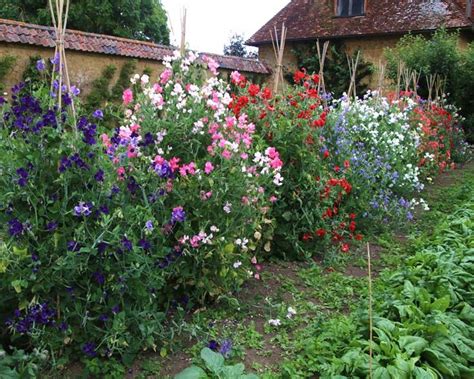Creating a thriving garden with sweet peas (Lathyrus odoratus) involves several key steps, including proper trellising and care. Bamboo canes, spaced 30cm apart and angled slightly into the soil, serve as an effective trellis for climbing plants like sweet peas and beans (Phaseolus vulgaris). Stakes placed every few feet behind the peas, with sturdy cotton twine strung along the middle and tops, further support the plants. In a helpful video, Sarah demonstrates how to tie sweet peas for enhanced production and longer, straighter stems.

Proper hydration is crucial for sweet peas; insufficient watering can lead to reduced blooming and plant dieback. For optimal growth, rake out a trench about 5cm deep and 10cm wide, sowing two rows of peas spaced about 7cm apart. The one-inch tendrils of peas enable them to climb objects less than a quarter inch thick, making insect netting an effective barrier against pests.
Economy pea and bean netting is ideal for supporting runner beans, peas, and sweet peas, especially when draped over a frame. This netting acts as a barrier against pest insects and aids in plant support. However, gardeners may wonder if too many pea plants in a confined space could lead to excessive competition. Additionally, issues like pigeons eating young pea leaves can arise. In such cases, using netting throughout the growth period, not just during seedling stages, can be beneficial.
For those looking to purchase garden netting for plant protection, Garden Netting (search) offers a variety of options, including bird netting and mesh netting for pest control, ideal for pea and fruit protection.

